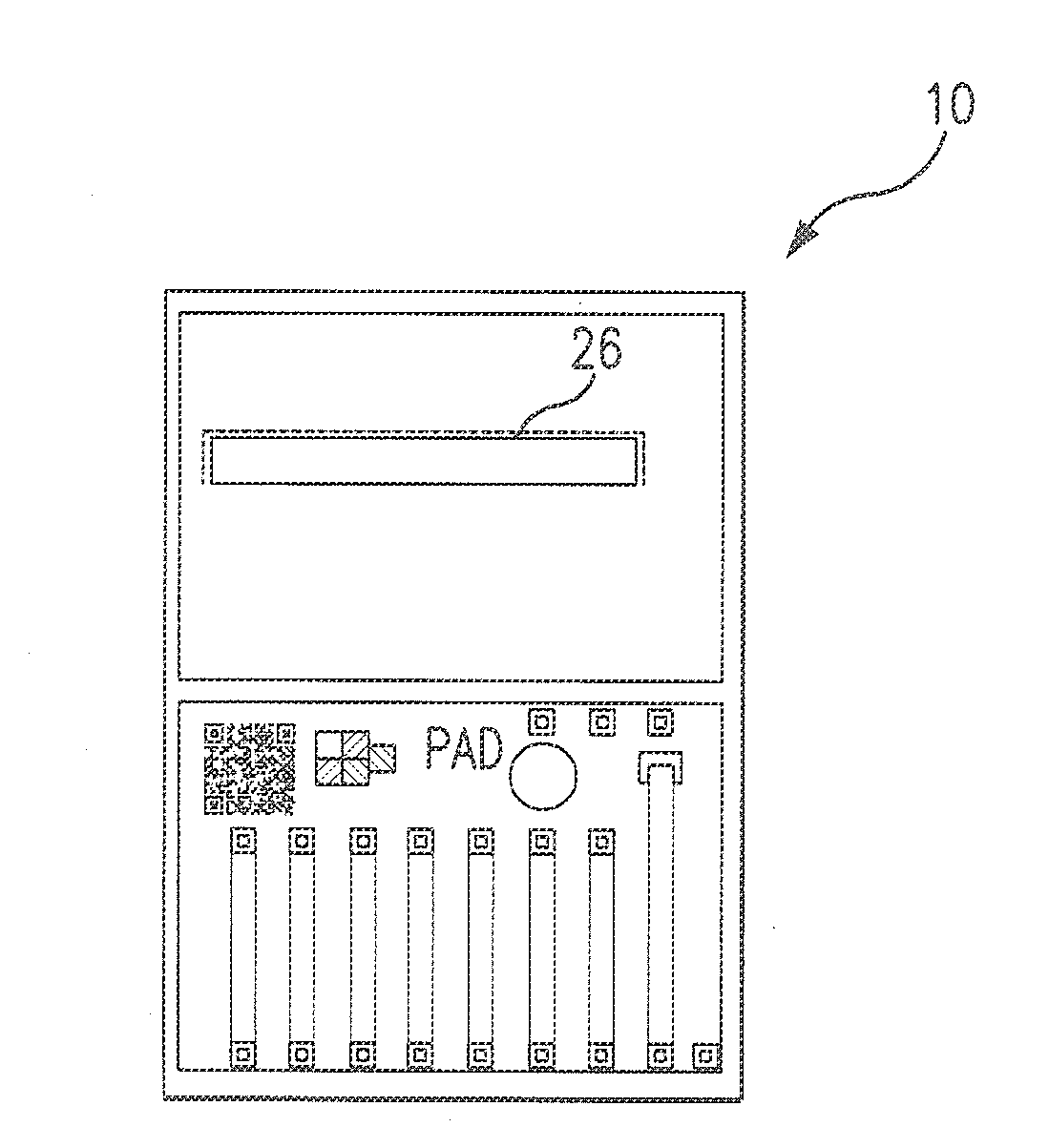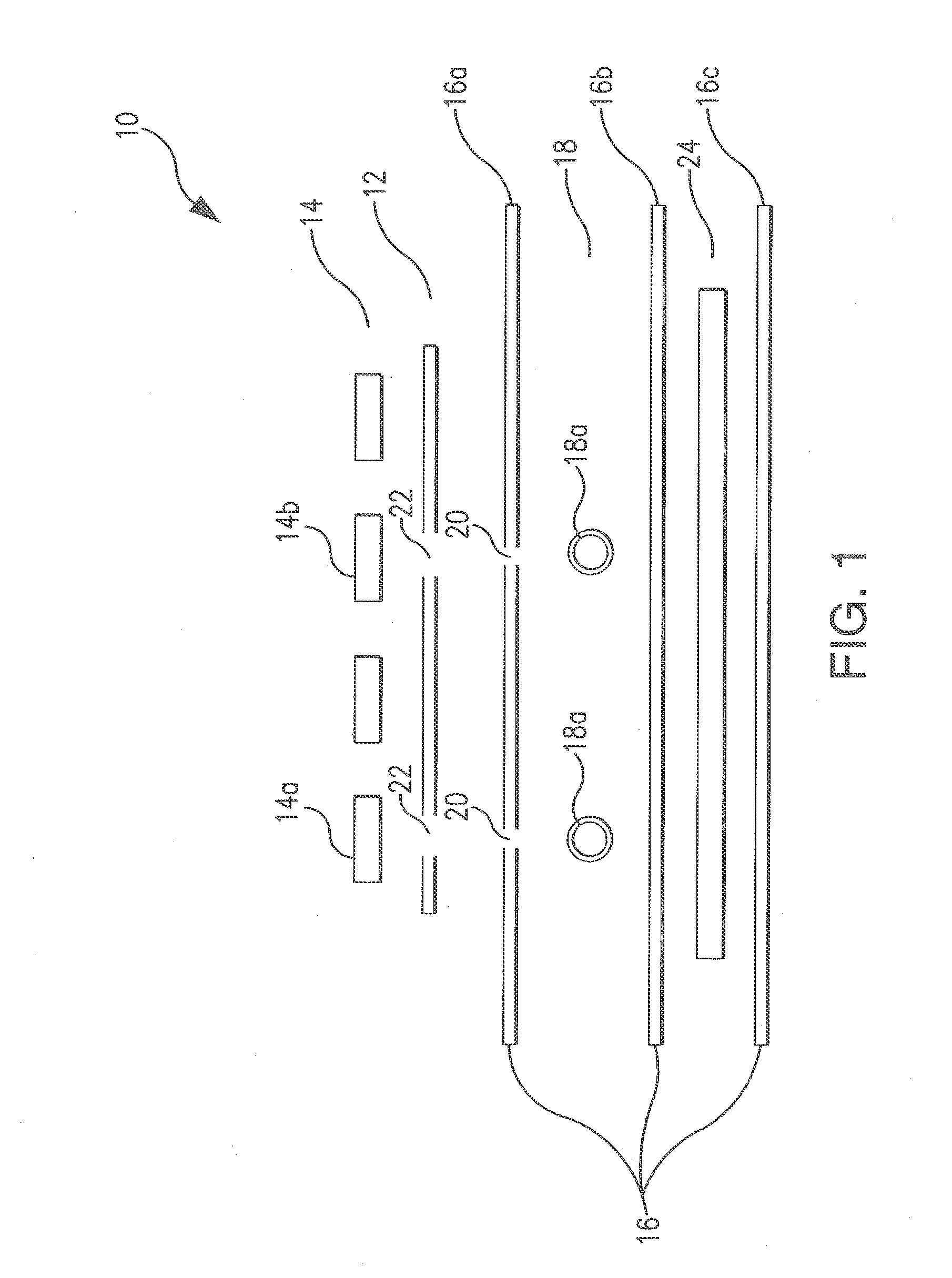Analytical devices for detection of low-quality pharmaceuticals
a low-quality, analytical device technology, applied in the direction of chemical methods analysis, chemical indicators, instruments, etc., can solve the problems of low quality of many medications sold in underdeveloped countries, difficult measurement of prevalence of such medications, and consumer taking a low-quality pharmaceutical product may die or experience other adverse medical effects
- Summary
- Abstract
- Description
- Claims
- Application Information
AI Technical Summary
Benefits of technology
Problems solved by technology
Method used
Image
Examples
example
[0068]An illustration of the invention and a comparison of its advantages over other devices appears below.
The Problem:
[0069]During the development of the Erythromycin PAD, it became necessary to create a new method for PAD fabrication. The paper had to be unadulterated, and the PAD had to be compatible with organic solvents. It was also necessary to develop a method of stabilizing certain reagents for long term storage. To this end, the Cut & Paste / Capillary Method was developed.
[0070]The PADs are developed as business-card sized testing systems that can help determine the authenticity of a suspicious pharmaceutical. Paper, or another absorbant material, is impregnated with a colorimetric reagent(s) that will indicate when a particular chemical or functional group is present.
[0071]The assay regions of the PAD were produced in a number of ways that are known to one skilled in the art:
SU-8 Method:
[0072]The paper medium is saturated with a crosslinking photoresist and then exposed to ...
PUM
| Property | Measurement | Unit |
|---|---|---|
| diameter | aaaaa | aaaaa |
| diameter | aaaaa | aaaaa |
| width | aaaaa | aaaaa |
Abstract
Description
Claims
Application Information
 Login to View More
Login to View More - R&D
- Intellectual Property
- Life Sciences
- Materials
- Tech Scout
- Unparalleled Data Quality
- Higher Quality Content
- 60% Fewer Hallucinations
Browse by: Latest US Patents, China's latest patents, Technical Efficacy Thesaurus, Application Domain, Technology Topic, Popular Technical Reports.
© 2025 PatSnap. All rights reserved.Legal|Privacy policy|Modern Slavery Act Transparency Statement|Sitemap|About US| Contact US: help@patsnap.com



